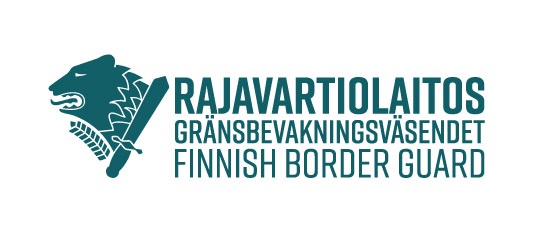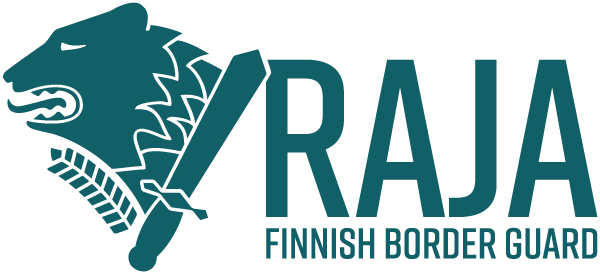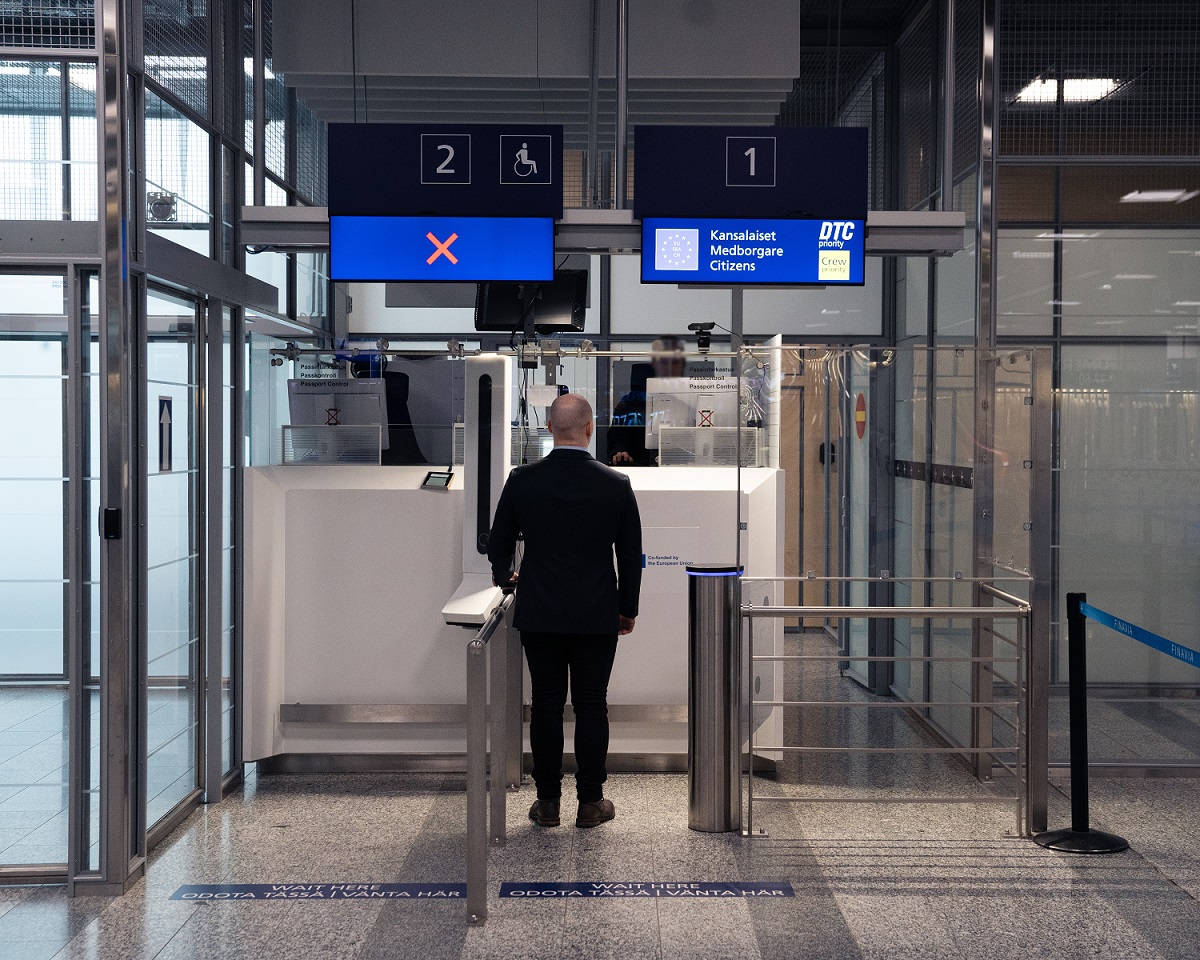The Finnish Border Guard piloted the Digital Travel Credentials (DTC) at Helsinki-Vantaa Airport from 28 August 2023 to 31 March 2024. DTC is a digital version of the traditional passport and enables faster and easier border control without compromising security. This pilot focused on border controls, but in the future, DTC is likely to be introduced in the EU to facilitate travel in various ways, such as at airports.
The pilot was carried out through collaboration between the Finnish Border Guard, volunteer passengers, the Police, Finnair, Finnish Immigration Service and Finavia. The Border Guard expresses its gratitude to all passengers who voluntarily participated in the pilot and to project partners. At the same time, the Headquarters of the Finnish Border Guard thanks the personnel of the Helsinki Border Control Department of the Gulf of Finland Coast Guard District for conducting DTC pilot border controls during the pilot. With the contribution of all parties, the pilot was successful within the specified timeframe.
Border control in eight seconds
The DTC pilot project tested border controls in a real border control situation. In the final phase of the pilot, DTC was available for all Finnair flights outside the Schengen area at Helsinki-Vantaa Airport.
For the pilot, a mobile application was developed, where registered individuals received their own digital travel document information. From the application, passengers sent their DTC information to the Finnish Border Guard before the journey began. In the actual border control situation, the passenger only needed to look at the camera and hold their passport above the reader for a moment.
DTC border controls were much faster than regular border controls: the average control lasted for only eight seconds. Measurement results showed that it took only about two seconds for technical measures from taking the picture to finding the correct DTC and checking the passport’s chip. The remaining six seconds were spent on the actions of the passenger and the border guard.
A total of 466 people participated in the pilot, and 355 successful DTC border controls were conducted. Although the numbers are not large, they are sufficient to demonstrate that the digital travel document works in border control. Based on user feedback and statistics, it can be concluded that DTC enables a safe, but significantly faster border control than the traditional one. The pilot provided a lot of information for the development of DTC, from legislative changes to practical implementation requirements.
Not all border controls were successful. During the pilot, DTC inspection lines had to be changed, for instance. Especially after this change, problems arose due to lighting. There were also some deficiencies in the system and its use. Failed border control events were, of course, regrettable for the passengers. At the same time, they provided valuable additional information on how the use of DTC should be implemented in the future.
The information obtained from the pilot will not only be used at the national level. The information has been and will be used in EU legislation preparation for DTC and in standardisation work for DTC in the International Civil Aviation Organization (ICAO).
Ease and speed received praise from testers
A survey on the experiences of using DTC was sent to the individuals who participated in the pilot. Of those who participated in the pilot, 48% had received information about the pilot through Finnair's communication channels. 23% of the respondents received information through the media, and 20% from the Finnish Border Guard's website.
The use of DTC was distributed among the respondents as follows: 44% had used DTC once, 39% had used DTC several times, and 17% had not used DTC for travel at the time of the survey. 91% found registration at the police service point easy, 96% found sending DTC in advance easy, 76% found DTC border control smooth and fast, 90% found using DTC in border control easy, and 90% of respondents would use DTC for travel.
Would you recommend the DTC to your friends?
- Very likely 66%
- Average approach 27%
- Probably not at all 7%
Where did you find out about the opportunity to participate in the DTC pilot?
- Border Guard website 20%
- Other authority e.g. Police website 5%
- Finnair website 48%
- Finavia website 2%
- Media 23%
- Social media 8%
- Other 13%
Have you used the DTC to travel?
- I have used the DTC to travel more than once. 39%
- I have used the DTC to travel once. 44%
- I have not yet used the DTC to travel. 17%
Registering the DTC at the police service point was easy.
- Fully agree 57%
- Agree somewhat 35%
- Neither agree nor disagree 4%
- Disagree somewhat 1%
- Totally disagree 3%
- I cannot say -
DTC could also be used for non-travel purposes (e.g. trusted authentication, banking, etc.).
- Fully agree 50%
- Agree somewhat 23%
- Neither agree nor disagree 9%
- Disagree somewhat 3%
- Totally disagree 3%
- I cannot say 12%
The instructions for using the DTC were clear.
- Fully agree 53%
- Agree somewhat 39%
- Neither agree nor disagree 1%
- Disagree somewhat 6%
- Totally disagree -
- I cannot say 1%
Sending the DTC in advance was easy.
- Fully agree 88%
- Agree somewhat 9%
- Neither agree nor disagree -
- Disagree somewhat 2%
- Totally disagree 1%
- I cannot say -
The minimum requirement of four hours for advance transmission of information was appropriate.
- Fully agree 60%
- Agree somewhat 21%
- Neither agree nor disagree 5%
- Disagree somewhat 12%
- Totally disagree 2%
- I cannot say -
The DTC border check was smooth and fast.
- Fully agree 64%
- Agree somewhat 12%
- Neither agree nor disagree 12%
- Disagree somewhat 7%
- Totally disagree 3%
- I cannot say 2%
Using the DTC for border control was easy.
- Fully agree 66%
- Agree somewhat 24%
- Neither agree nor disagree 2%
- Disagree somewhat 4%
- Totally disagree 3%
- I cannot say 1%
I would continue to use the DTC to travel.
- Fully agree 81%
- Agree somewhat 9%
- Neither agree nor disagree 3%
- Disagree somewhat -
- Totally disagree 4%
- I cannot say 3%
Digital residence permit and chip error management included in the pilot
At the same time as in Finland, DTC was piloted in air traffic from Zagreb to third countries and/or back to Croatia. The pilots in both countries constitute a joint project led by the Finnish Border Guard, and its results will be reported to the EU Commission during the spring.
In Finland, as part of the pilot, a quickly deployable digital residence permit was planned, in collaboration between the company that developed the DTC application and the Immigration Service, based on a digitally signed 2D barcode. The barcode had to include a sufficiently high-quality portrait image so that only the code could be used as a permit in situations where producing a physical residence permit would be problematic.
The need for such a contingency solution arose when not all EU member states were able to issue residence permits to all individuals in need of temporary protection due to the situation in Ukraine. In the pilot, a 2D barcode was successfully developed in accordance with the goal. However, the prerequisite is that the original image is of very high quality so that the image on the barcode is sufficiently small but still of sufficient quality.
Another part of the pilot belonging solely to Finland was related to deficiencies in the chips of genuine travel documents. In DTC, only the passport or ID card chip is utilised, not the physical document directly, making the management of chip deficiencies even more critical than at present. In the pilot, the National Police Board tested a chip reading program for travel documents, which detects all known deficiencies in genuine chips. The program corrects all deficiencies that can be corrected without compromising security before the actual chip inspection is performed. This way, all possible genuine chips can be made to work, whether it's related to DTC or to the inspection of the travel document's chip.
The project was funded by the Directorate-General for Migration and Home Affairs of the European Commission through the BMVI funding instrument (Instrument for Financial Support for Border Management and Visa Policy) with 2.3 million euros.


Press releases on the topic
-
26.1.2024 11.43Testing of the digital travel document DTC expands significantly at Helsinki Airport: 22 Finnair destinations now included
-
15.12.2023 10.13DTC border control lines at Helsinki Airport reopened
-
20.11.2023 15.21The DTC border control temporarily suspended
-
25.10.2023 10.06DTC, a digital travel document being tested in Finland, was selected as one of TIME's best inventions
-
25.8.2023 10.20Finns are the first in the world to test a digital travel document

